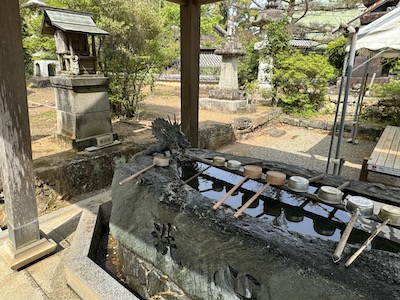A paved concrete surface at the fountain helps keep the surrounding area safe and dry.
A complaint from ohenros on the pilgrimage path is that the walking surface is too hard. Meaning that there is an unexpectedly enormous amount of paved roads and concrete surfaces. Walkers come to Japan and the pilgrimage path looking to be surrounded by all things green. They want green forest and mountain trails, beautiful flowers, and unaltered natural surfaces.
They are here.
On the surface
We don’t always get what we want, in this case, green grass to walk on. Often, it is over there and never over here.
We get these.
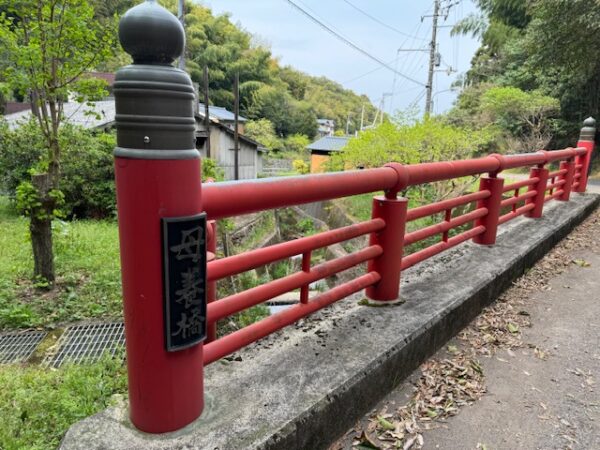
Is this a suitable trade-off?
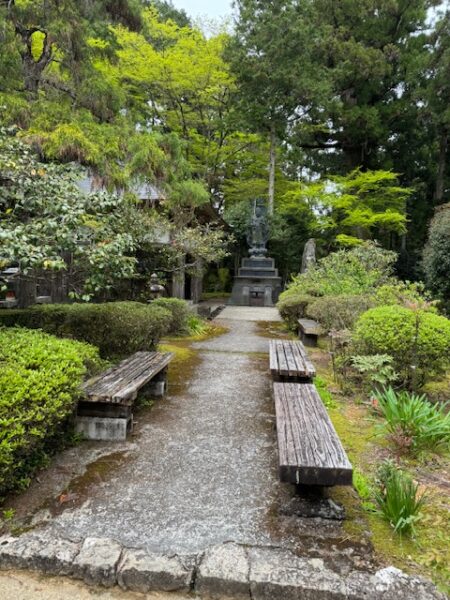
Never complain.
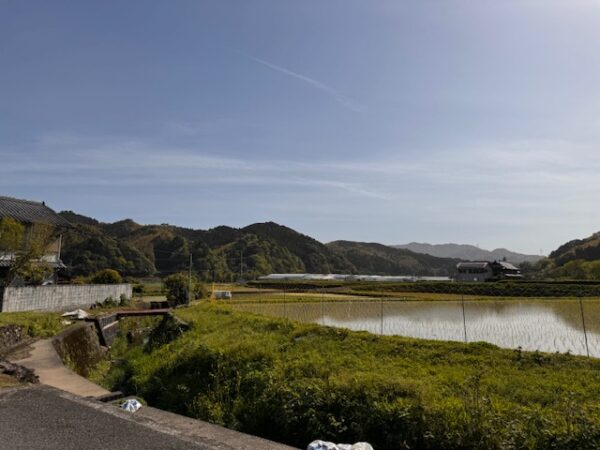
Well, not always.
Let’s Walk
Temple 14 Joraku-Ji
This approach to temple 14 looks like something from prehistoric times.. The surface appears to be the remnant of volcanic flow in the mountains.
I saw this many times on the camino in Spain.
A “sea” of this surface is frightening, I have to admit. It is a feeling that I had many times. The moment I looked up and saw that sea of solid matter or monstrous wall of this stuff going further up a mountain until that is all I saw, my heart sank. Every time. Every time.
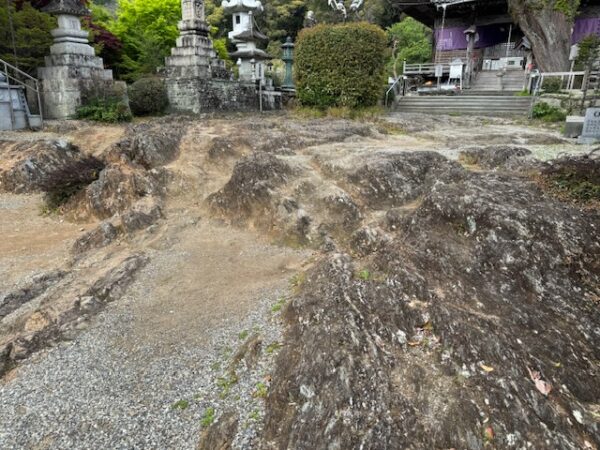
No matter what country, this is a tricky surface to walk on especially after a rain. Carrying a backpack does not help but a walking stick comes in handy.
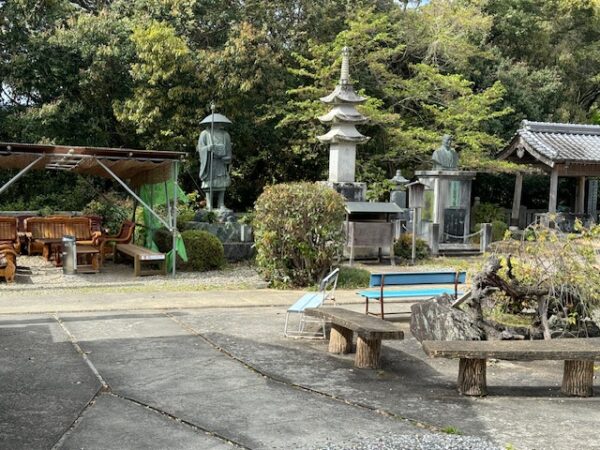
Stone steps are ubiquitous on the trail. Watch out! They are tripping magnets.
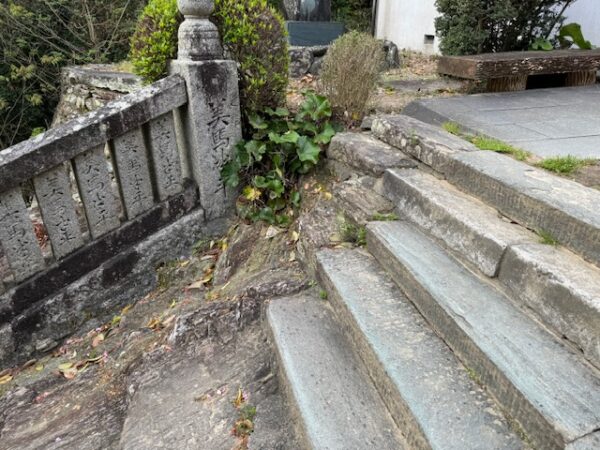
Note the transition from the natural volcanic flow to the stone steps.
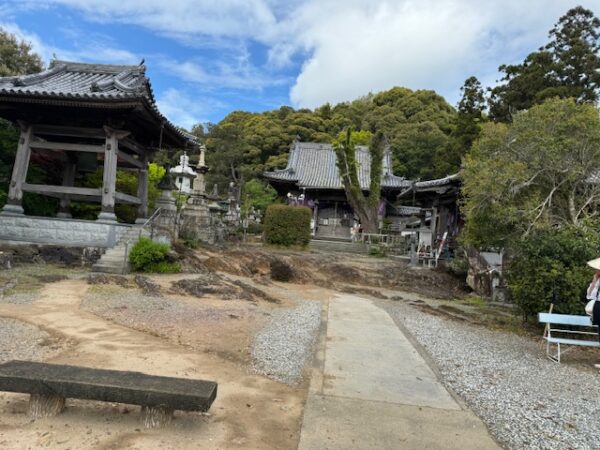
A mixture of surfaces – volcanic flow, concrete, and gravel.
Temple 15 Kokubun-Ji
This granite column points the way to temple 15 on a paved surface path.
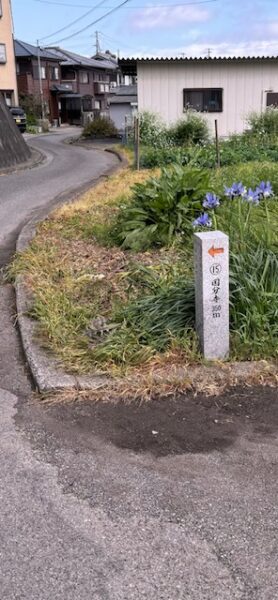
A paved surface like this in many towns serves walkers, bikers, and drivers.
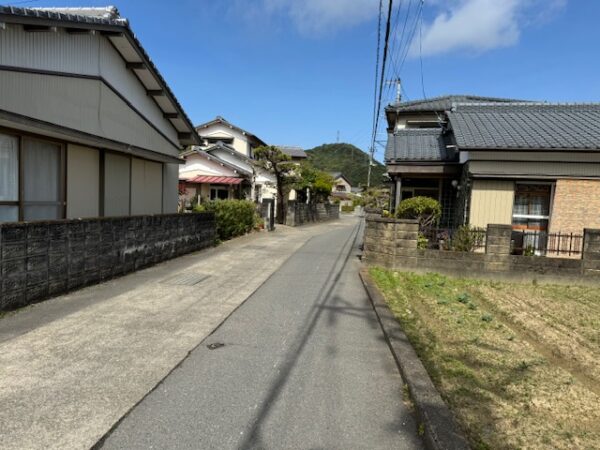
Expect to share the road with agricultural vehicles and animals.
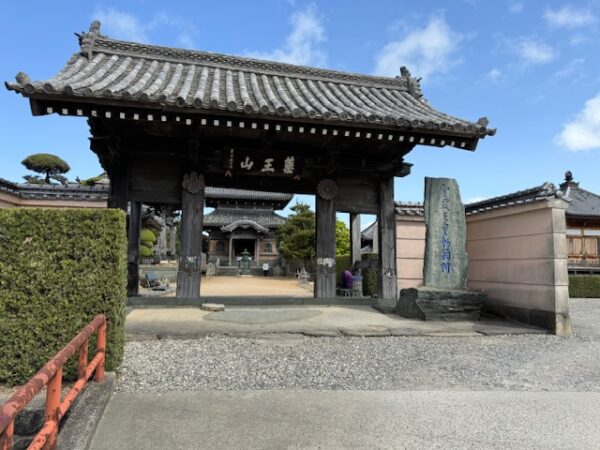
Expedient surface maintenance at the temple gate is necessary after holidays and celebrations.
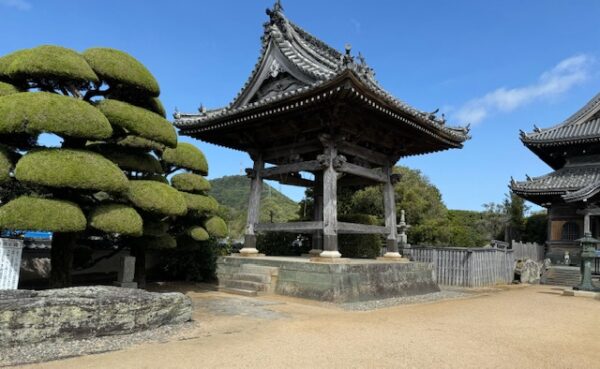
The surface here in a mix of pounded gravel and dirt. It is comfortable to walk on.
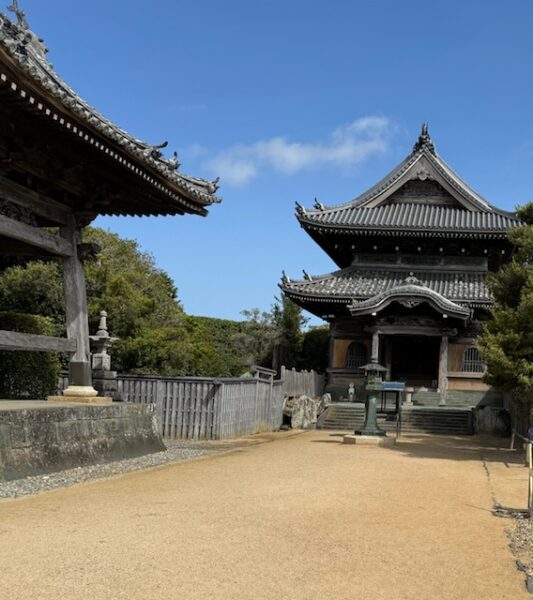
The walkway is less susceptible to damage from rain and wind.
Temple 16 Ka’no-Ji
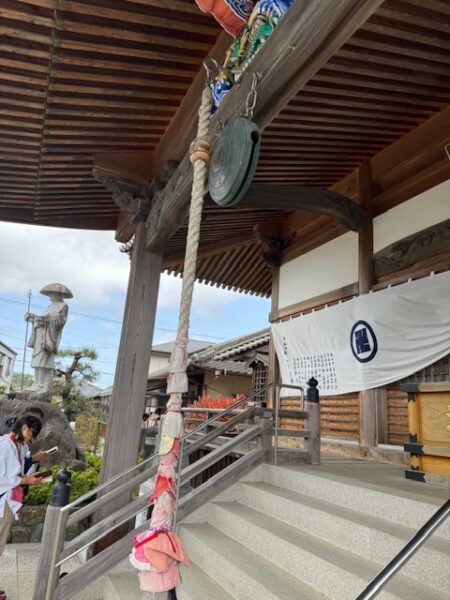
These look like recently renovated steps at the main temple. The risers are very steep so care must be taken when walking upon this surface.
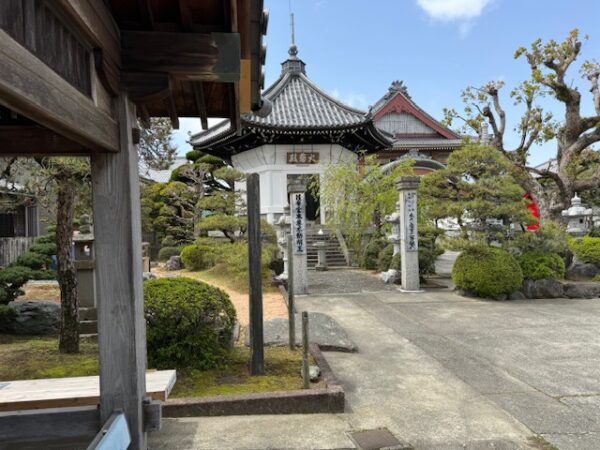
On days when the weather is rainy or windy, paved surfaces keep the dust down.
Temple 17 Ido-Ji
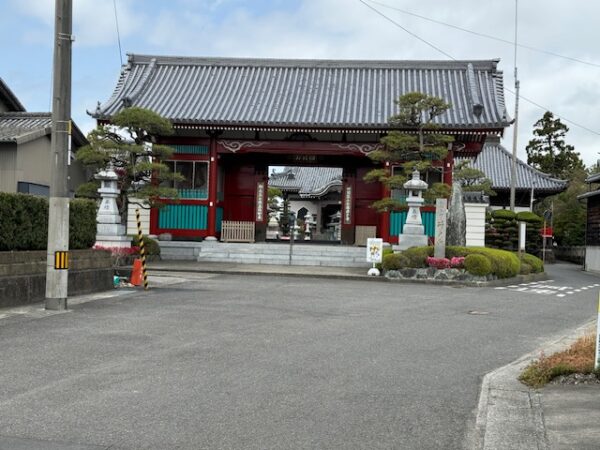
Niō guardians at the gate entrance.
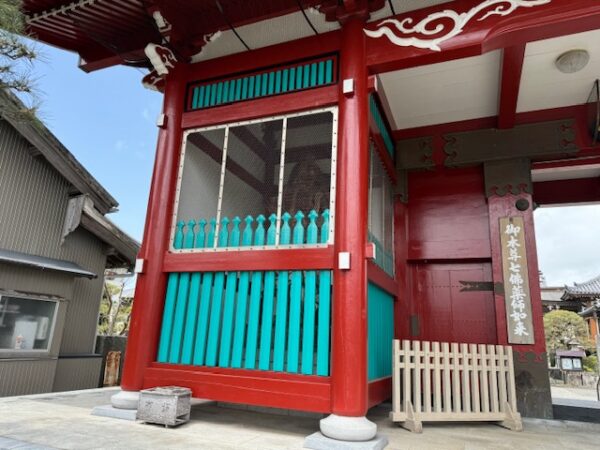
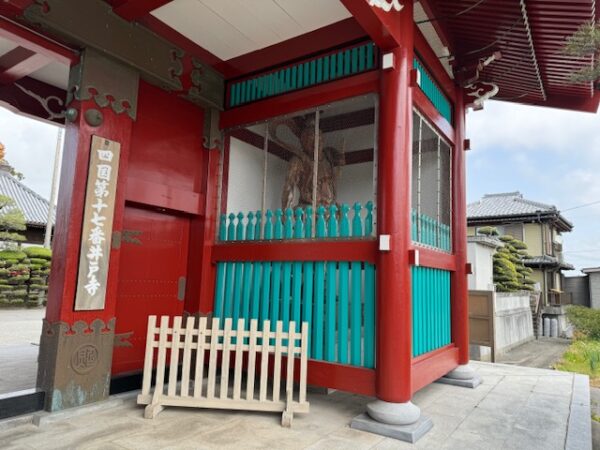
The supporting structure appears to be cut granite blocks.
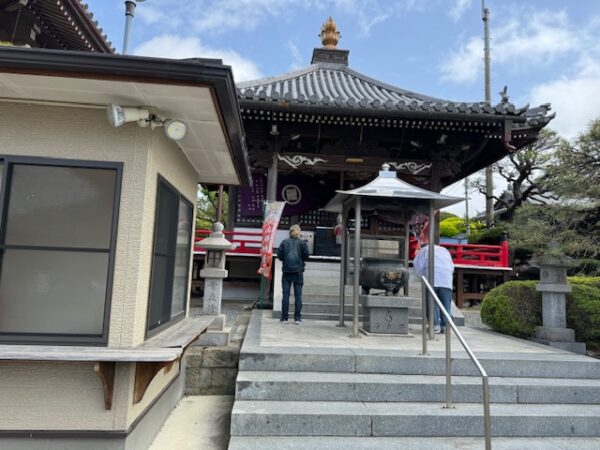
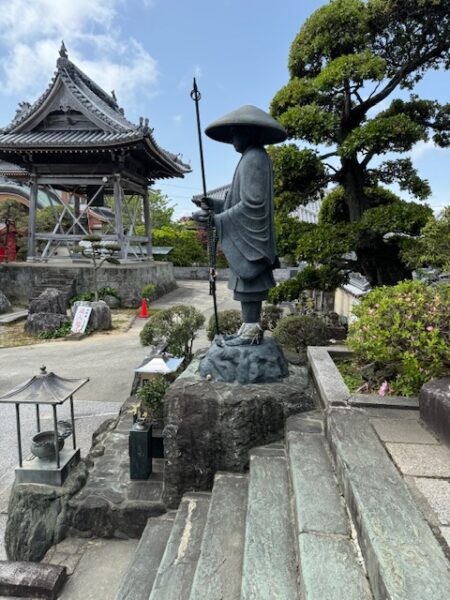
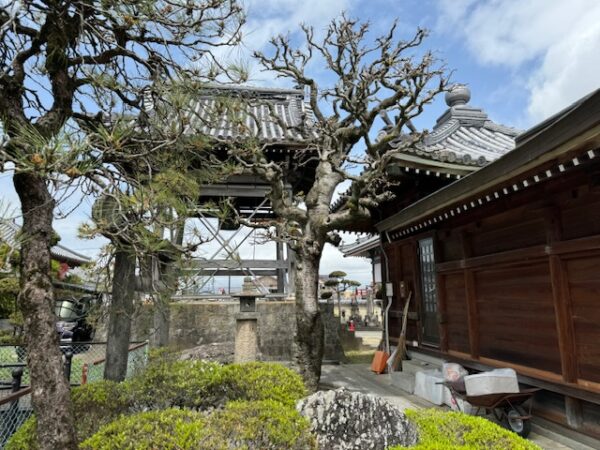
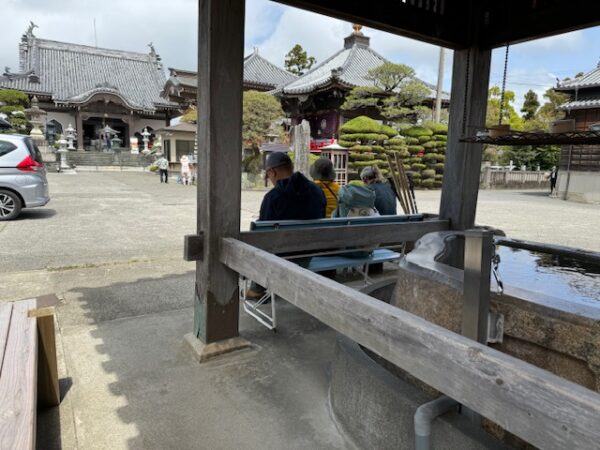
Varying kinds of surfaces suit the location and purpose of their placement on temple grounds
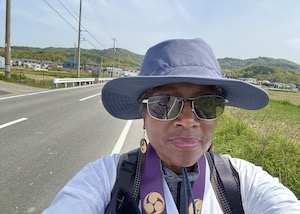
Asphalt on the highways is the same all over the world!
Temple 18 Onzan-Ji
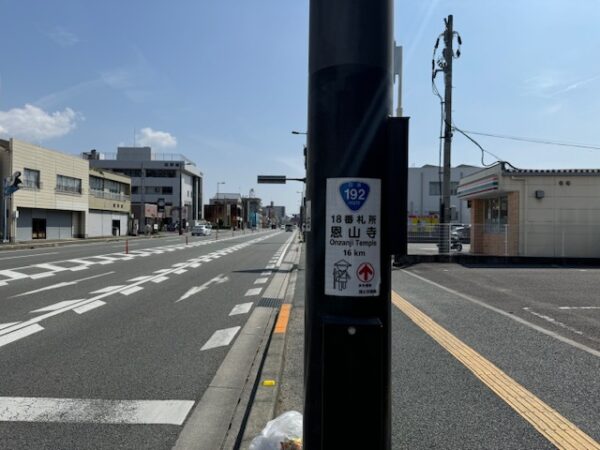
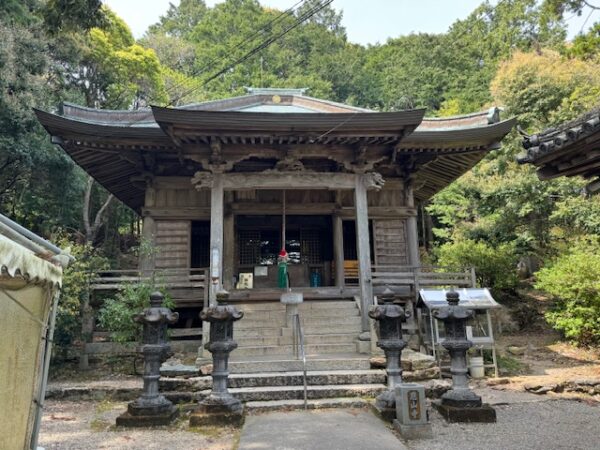
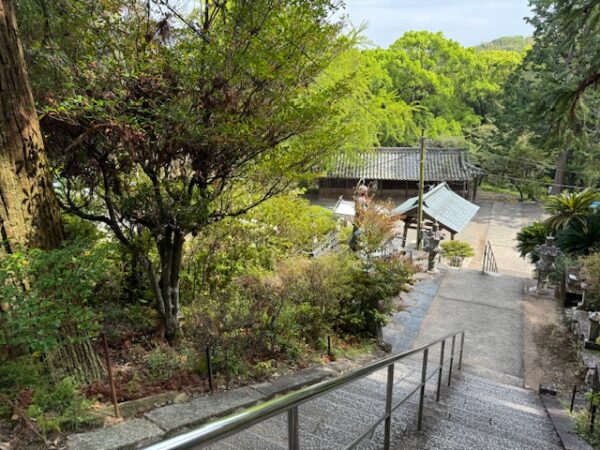
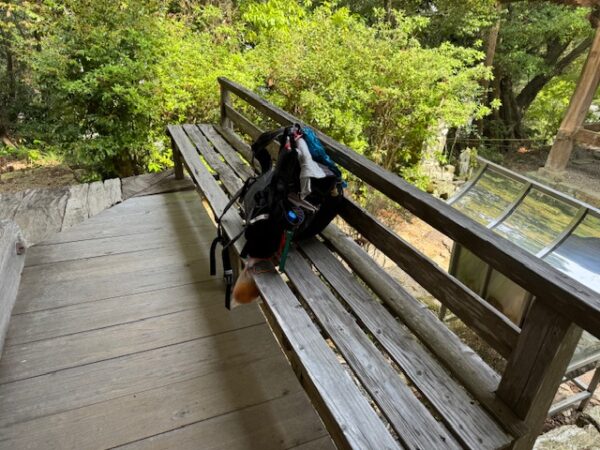
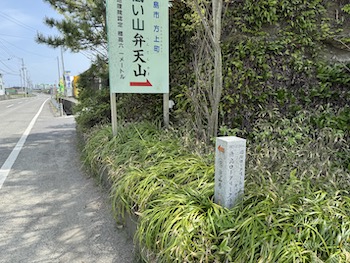
More surfaces to overcome
Tatami mats surfaces are fiercely protected at temples, restaurants and in homes.
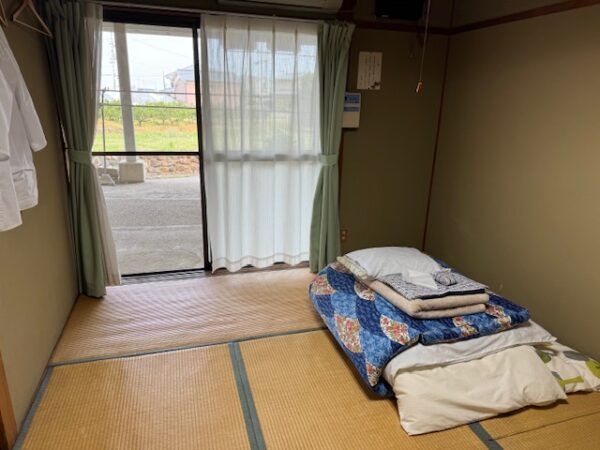
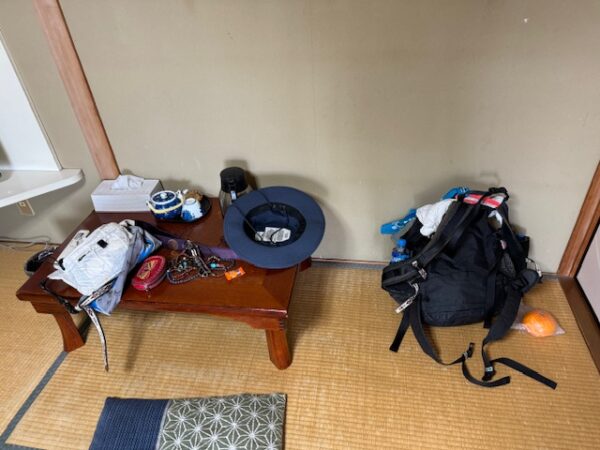
No shoes or dragging heavy objects are allowed. The surface is hard on my bare feet. I wear socks where I can.
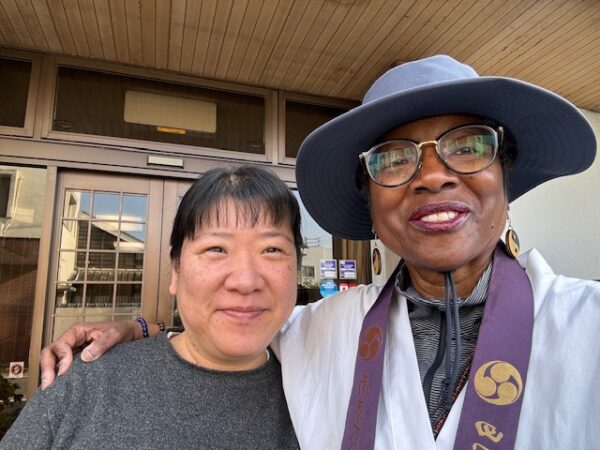
Temple 19 Tatsue-ji
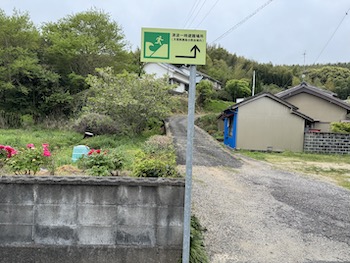
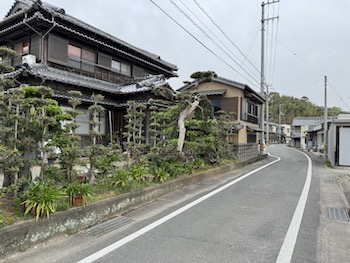
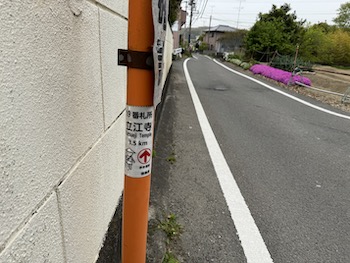

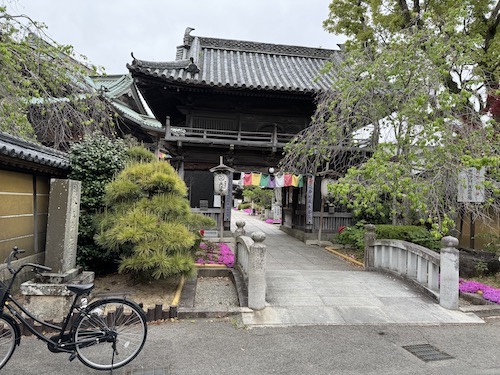
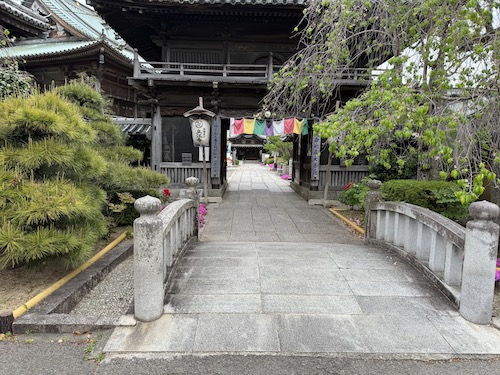
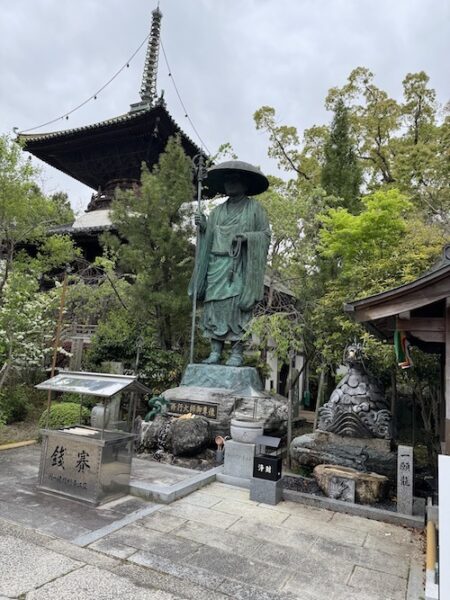
Resignation or Acceptance
I met an ohenro at a temple who told me a story. He said that he asked an old man, an ohenro, what he should do if the trail is painful on his body and feet. The old man replied that he should keep walking.
I thought to myself: on the surface, that seemed to be a dispassionate answer. Somehow, I understood it. Having experienced pain in my walking pilgrimage in the past and now, I knew that the lesson is to persevere. I believe we should seek an answer to another question. I ask, is this really suffering? Is this – walking on the path toward enlightenment – suffering?
I say that it is.
It is self-inflicted but hopefully not masochistic. The goal, however, is to confront and manage to get where you are going. Let the pain in your feet, knees, body, and mind teach you the lessons about yourself you came to this place, at this time, to learn.
My fellow ohenro must have thought it was so and continued on the path.
Despite the quality of the surface, pilgrims must go on. Walk long enough and you encounter your surface of choice. Acknowledge and observe your feelings until you hit the next piece of gravel, concrete, tile, dirt, mud, or water puddle. Remember too, the pilgrimage path features walking along beaches, the ocean and the wide open sea.
You will encounter and walk on them all, not just the one you want. Make friends with each of them. They may just save you at the very moment you need it. That is acceptance.
Isn’t that life, too?
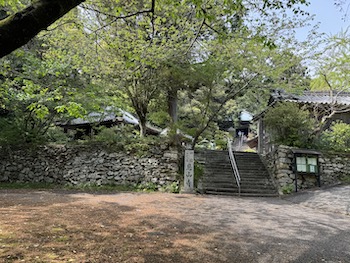
During the spring of 2024, I began a pilgrimage in Japan where I am walking 1200 kilometers or 720 miles on the Shikoku trail from Temple 1 Ryōzenji to Temple 88 Ōkuboji and beyond. Read my original announcement here.
I am excited, and I am here, still walking. And just know this, I will return to tell the tale!
Baadaye and Mata Ne
Shirley J 🌸

